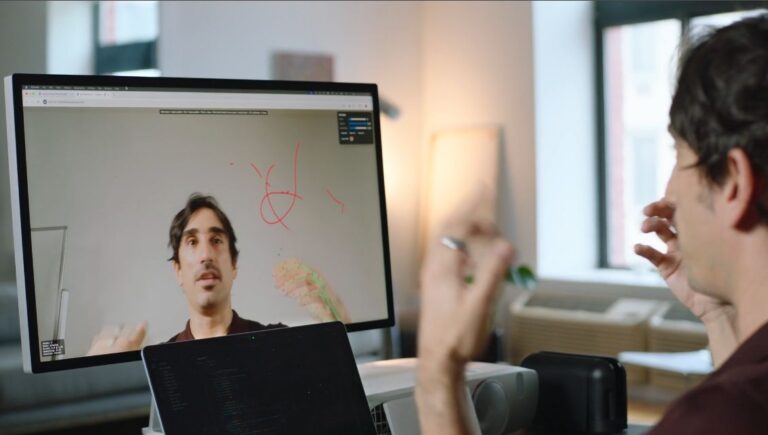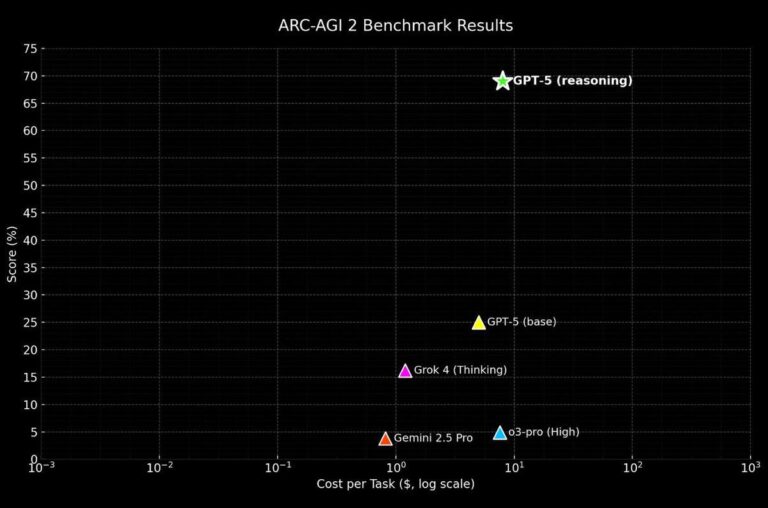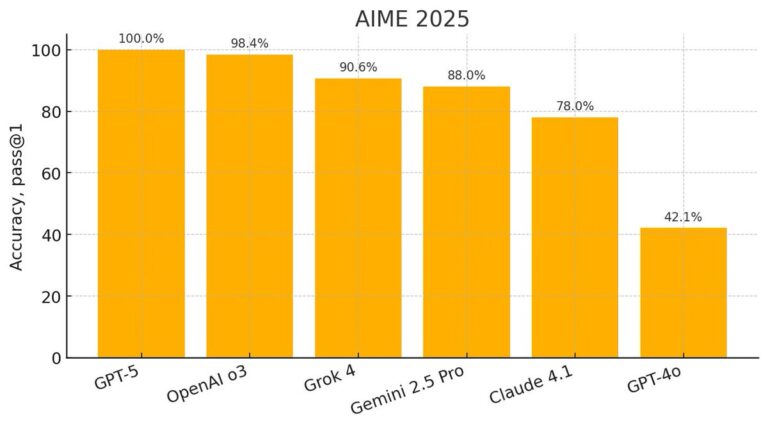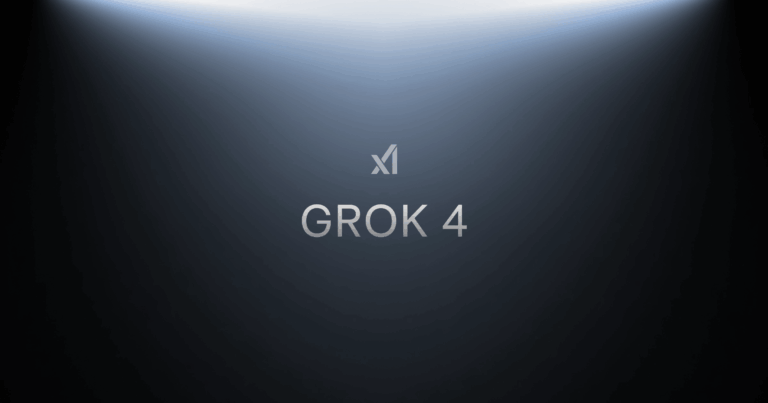The artificial intelligence battlefield has reached a pivotal moment in 2025. Two titans stand at opposite ends of the spectrum: OpenAI’s ChatGPT-5, representing polished versatility and enterprise reliability, versus xAI’s Grok 4, championing raw technical prowess and unfiltered reasoning. This comprehensive analysis cuts through marketing noise to reveal which model deserves your investment.
The AI Revolution Accelerates in 2025
ChatGPT-5: The Unified Powerhouse
OpenAI’s August 2025 release fundamentally changed how we interact with AI. ChatGPT-5 eliminates the frustrating model-switching between quick responses and deep reasoning. The unified architecture automatically determines when situations require rapid answers versus complex problem-solving, creating a seamless user experience previously impossible.
The model arrives in three variants: full GPT-5, mini, and nano versions. This tiered approach acknowledges that not every task requires maximum computational power, making AI more accessible across different use cases and budgets.
Grok 4: The Technical Specialist
Grok 4 represents xAI’s commitment to “maximally truth-seeking” AI. Built on an estimated 2.4 trillion parameters and powered by the Colossus supercluster, this model prioritizes technical accuracy over diplomatic responses. The integration with X provides continuous real-time data access, transforming how AI handles current events and trending topics.
Architecture and Core Capabilities Breakdown
Processing Power and Model Design
ChatGPT-5 operates on approximately 1.5 trillion parameters with extensive reinforcement learning from human feedback. This training methodology produces responses that feel natural and contextually appropriate across diverse scenarios.
Grok 4’s architecture emphasizes raw computational reasoning with its 2.4 trillion parameters. The model’s training on web data and live X posts creates unique advantages for real-time analysis and technical problem-solving.
Context Window Comparison
The context window battle reveals stark differences in approach. ChatGPT-5 delivers a massive one million-token capacity, enabling comprehensive analysis of entire codebases or lengthy documents within single conversations. More critically, it maintains persistent memory across sessions, making it invaluable for ongoing projects.
Grok 4 provides a respectable 256,000-token context window but resets memory after each session. While adequate for most tasks, this limitation restricts its effectiveness in complex, multi-day projects.
Performance Testing: General Knowledge vs Technical Mastery
Benchmark Performance Analysis
The models excel in different testing environments. Grok 4 dominates technical benchmarks with impressive scores: 95% on AIME 2025 mathematics and 87.5% on GPQA scientific reasoning. These results demonstrate superior performance in STEM applications and complex problem-solving scenarios.
ChatGPT-5 maintains competitive performance with 86.4% on MMLU general knowledge assessments. However, it trails slightly in coding benchmarks, achieving 67% on HumanEval compared to Grok 4’s 72-75%.
Coding and Development Capabilities
Programming tasks reveal each model’s specialized strengths. Grok 4 resolves complex coding challenges 15% more effectively than previous benchmarks, with average response times of 0.8 seconds for code generation. The model’s technical focus translates to more efficient debugging and algorithm optimization.
ChatGPT-5 approaches coding from a broader perspective, integrating development work with project planning and client communication. While potentially slower in pure code generation, it excels at explaining complex technical concepts to non-technical stakeholders.
Real-Time Data and Information Access
Current Events and Live Updates
Grok 4’s DeepSearch mode provides continuous access to current information through X integration. This capability proves invaluable for content creators requiring up-to-the-minute trend analysis and social media insights.
ChatGPT-5 relies on periodic Bing integration for current information. While less immediate than Grok’s approach, this method provides more curated and fact-checked information sources.
Research and Analysis Applications
For comprehensive research projects, the models serve different needs. Grok 4 excels at challenging assumptions and providing contrarian analysis. When reviewing marketing strategies, it questions fundamental premises rather than simply offering incremental improvements.
ChatGPT-5 demonstrates superior synthesis capabilities, particularly when processing multiple information sources simultaneousl. The extended context window allows for comprehensive analysis of competitor research, market data, and internal documentation within single conversations.
Enterprise Features and Business Applications
Professional Integration Capabilities
ChatGPT-5 provides comprehensive enterprise solutions with SOC 2 compliance, data encryption, and team collaboration tools. The 99.9% uptime guarantee and 24/7 customer support make it suitable for mission-critical business applications.
Grok 4 lacks dedicated enterprise features, relying on X platform stability without formal uptime guarantees. This limitation restricts its adoption for businesses requiring compliance certifications and reliable customer support.
API Access and Developer Ecosystem
The development community finds stark differences between platforms. ChatGPT-5 offers a robust, well-documented API enabling thousands of third-party integrations. This ecosystem approach has made it the default choice for businesses building AI-powered applications.
Grok 4 currently provides no public API access, confining its use primarily to standalone research within the X ecosystem. This limitation significantly restricts its integration potential for custom business solutions.
Multimodal Capabilities and Creative Applications
Visual and Audio Processing
ChatGPT-5 integrates DALL-E 3 for seamless image generation alongside text, audio input processing, and basic video analysis. This multimodal approach enables comprehensive content creation workflows from concept to final visual assets.
Grok 4 remains predominantly text-focused, prioritizing reasoning capabilities over multimedia integration. While this specialization enhances its technical performance, it limits creative applications requiring visual elements.
Content Creation and Writing Quality
For professional writing applications, ChatGPT-5 demonstrates superior tone adaptation and audience awareness. The custom GPT functionality allows businesses to create brand-specific AI assistants with consistent voice and messaging.
Grok 4’s writing style reflects its “maximally truth-seeking” philosophy with characteristic wit and directness. While engaging, this approach may not suit all professional contexts requiring diplomatic communication.
Pricing and Accessibility Analysis
Cost Structure Comparison
ChatGPT-5 follows OpenAI’s tiered pricing model: free basic access, $22 monthly for Plus, and $200 monthly for Pro subscriptions. The clear rate limits and transparent pricing make budget planning straightforward for businesses.
Grok 4 requires X Premium for full access, starting at $30 monthly for SuperGrok features. The pricing structure ties AI access to social media platform usage, potentially limiting adoption for users seeking standalone AI tools.
Value Proposition for Different Users
Small businesses benefit from ChatGPT-5’s versatility and user-friendly interface. The unified approach reduces learning curves while handling diverse business tasks competently.
Technical professionals and researchers find Grok 4’s specialized capabilities justify its cost, particularly for STEM applications requiring cutting-edge reasoning performance.
Language Support and Global Accessibility
Multilingual Capabilities
ChatGPT-5 supports over 100 languages with high accuracy, making it effective for international businesses and localization projects. This broad language support enables global deployment without significant performance degradation.
Grok 4 focuses primarily on English with support for approximately 50 languages. The narrower language focus reflects its technical specialization but limits international applications.
Safety Considerations and Content Policies
Ethical Approach Differences
ChatGPT-5 implements extensive safety filters designed to avoid generating harmful or controversial content. These guardrails make it suitable for corporate applications requiring brand safety but may produce overly cautious responses in some contexts.
Grok 4’s “maximally truth-seeking” philosophy results in notably less filtered responses. While this approach provides more direct answers on controversial topics, it requires careful consideration for brand-sensitive applications.
The Agentic AI Evolution
Autonomous Task Execution
Both models demonstrate emerging agentic capabilities, but with different strengths. ChatGPT-5 shows the most robust autonomous task breakdown and execution, making it suitable for complex workflow automation.
Grok 4’s real-time data access enhances its autonomous research capabilities, particularly for dynamic market analysis and trend identification.
Future Development Trajectories
The rapid pace of AI development suggests continued evolution for both platforms. Integration between different AI systems represents the next frontier, with successful businesses likely using orchestrated workflows leveraging each model’s specific strengths.
Practical Implementation Recommendations
Choosing Based on Primary Use Cases
Content creators and marketing professionals should prioritize ChatGPT-5 for its superior writing quality, customization options, and multimodal capabilities. The consistent tone and brand safety features align with professional content requirements.
Engineers, analysts, and researchers benefit more from Grok 4’s technical reasoning excellence and real-time data access. The unfiltered approach and STEM benchmark leadership make it ideal for specialized technical applications.
Multi-Model Strategies
Advanced users increasingly adopt multi-model approaches, using GPT-5 for client communication and content creation while leveraging Grok 4 for technical analysis and research. This strategy maximizes each model’s strengths while minimizing individual weaknesses.
The Verdict: Context Determines the Winner
Rather than declaring an absolute winner, the choice between ChatGPT-5 and Grok 4 depends entirely on specific needs and use cases. ChatGPT-5 excels as a comprehensive business tool with enterprise reliability, creative versatility, and global accessibility. Its unified architecture and extensive integration ecosystem make it ideal for organizations seeking dependable AI assistance across diverse applications.
Grok 4 dominates in technical specialization, offering superior performance in coding, mathematics, and scientific reasoning. The real-time data access and unfiltered approach provide unique advantages for research-focused applications requiring cutting-edge analytical capabilities.
The most successful AI implementations in 2025 recognize that different tools excel in different contexts. Rather than seeking a single solution, forward-thinking businesses are developing multi-model strategies that leverage each platform’s specific strengths while building sustainable, productive AI workflows.
The AI arms race continues accelerating, with both OpenAI and xAI pushing boundaries in different directions. Your choice should align with immediate needs while considering long-term strategic goals for AI integration in your specific industry and workflow requirements.
If you are interested in this topic, we suggest you check our articles:
- AI-Powered Search Evolves with Reddit Answers
- Avoid This When Entering Prompts for AI Search Tools
- Perplexity’s Challenge to Google’s Search Dominance
- Where Search LLMs Crawl Their Data?
- The Impact of AI Overviews on Search and Website Engagement
Sources: OpenAI, McNeece, AI News Hub
Written by Alius Noreika




